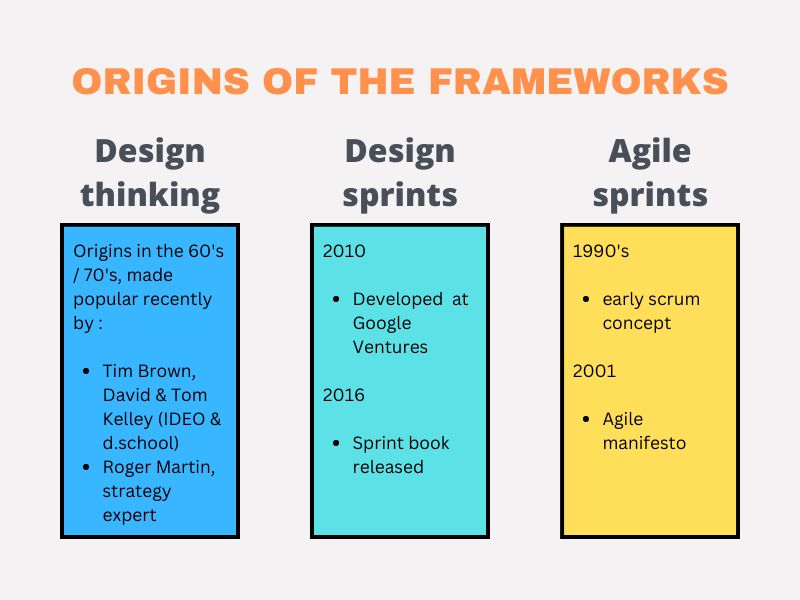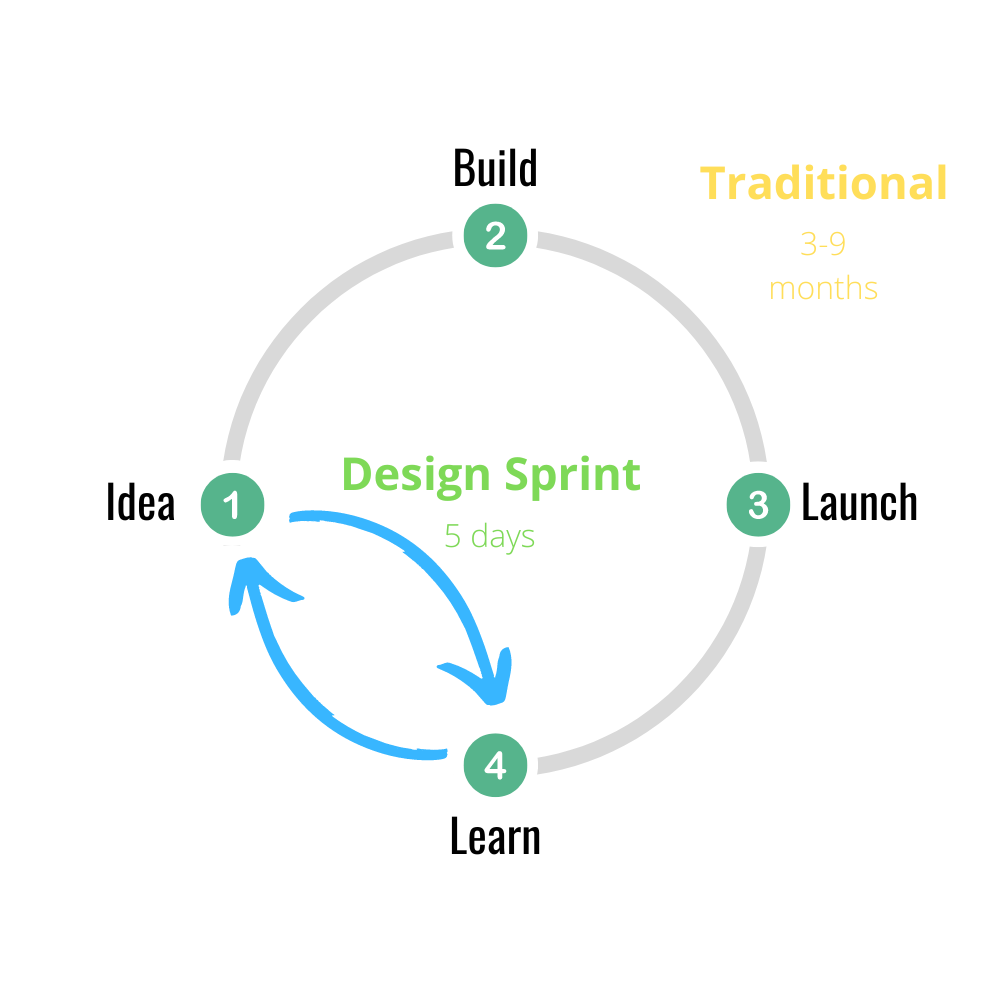In today’s issue, I will show you the difference between design thinking, design sprints, agile sprints and how they relate to the innovation process.
Understanding these concepts’ differences is essential when attempting to solve complex problems and build innovative solutions.
Design thinking is a human-centred methodology for complex problem-solving, drawing on various useful mindsets, tools and techniques.
The design thinking process provides more freedom, and while arguably more comprehensive, it is often more time-consuming.
Design sprints are different. Design sprints are activities focused on testing and validating an idea with users within five days.
Agile sprints are different again. Agile is most commonly used as a way to develop a software product. However, the approach is applied to many other types of project management.
Unfortunately, most people need clarification about what they are and when to use them.
This means they get frustrated from the experience and revert to less effective methods.
Design thinking is the master blueprint. Design sprints are a structured system. Agile sprints deliver the end product.
Read time: 5 minutes (or less) 👇
What you’ll takeway today:
- Origins of the frameworks.
- What are the strengths of each.
- When to use each framework.
Let’s get going!
The Origins of the Frameworks

Before design thinking, most business leaders used traditional, linear methods to try and solve complex problems.
Now, with more complexity, there are more unknowns, which lends towards creativity and sensing rather than linear, fact-based approaches.
Agile methods came about to counter the ever-increasing document-driven requirements for software development and rely on time-boxed delivery cycles.
Notably, the agile manifesto provides a set of guiding principles.
Jake Knapp and a small team at Google Ventures conceived and perfected design sprints. Design sprints provide a formula to test and validate big ideas over five days.
Jake later wrote the sprint book to spread the word around the globe.
Framework Strengths and Purpose

Before design thinking, most business leaders used traditional, linear methods to try and solve complex problems.
Now, with more complexity, there are more unknowns, which lends towards creativity and sensing rather than linear, fact-based approaches.
Agile methods came about to counter the ever-increasing document-driven requirements for software development and rely on time-boxed delivery cycles.
Notably, the agile manifesto provides a set of guiding principles.
Jake Knapp and a small team at Google Ventures conceived and perfected design sprints. Design sprints provide a formula to test and validate big ideas over five days.
Jake later wrote the sprint book to spread the word around the globe.
When to Use Each Framework?
Significant, complex problems are ambiguous and, therefore, hard to define.
Design thinking works best in this problem space to gain empathy, derive insights, and generate and test innovative ideas.
Here is the model I recommend using created by Dr. Christian Walsh:

Design sprints are great for:
- Making immediate progress.
- Team alignment.
- Fast learning cycles.

Agile uses a discovery and learning methodology as the product is being built and delivered rather than planning everything.
The agile approach is highly collaborative and visual and encourages communication and shared ownership while using several different techniques, such as scrum.

The Short of it.
- Design thinking excels in the complex problem-definition and problem-solving space.
- Design sprints are great for testing assumptions and prototyping ideas fast.
- Agile is for project managing by iteratively building and delivering in short sprints.
If you enjoyed this newsletter, please share it with 1 other person.
That’s all.
Let’s achieve together.
🥇 LinkedIn Tip of the Week 🥇

🔥Design Sprint Quote🔥
“great innovation is built on existing ideas, repurposed with vision” – Jake Knapp, Author – Sprint book.
👏 Free Design Thinking Course 🙌
I recently launched a free 7-day course that will teach you the fundamentals of validating a business idea, solving a complex problem, innovating a product or service.
You can learn it in less than 10 minutes a day.
Here is some feedback I recieved:
“A well-constructed, easy to understand mini course that introduces you to some key principles, methods and tools of design thinking. Very applicable in healthcare quality improvement and co-design.”“Highly recommend!” ⭐️⭐️⭐️⭐️⭐️
Can’t wait to share it with you.
You can access it here.

